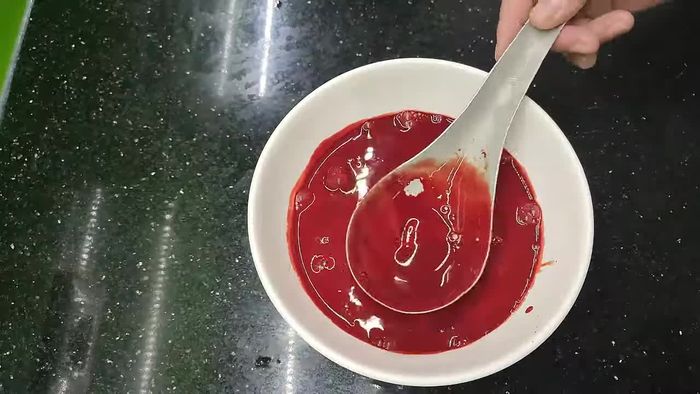"Boiled Blood," or Tiết canh as it's known in Vietnam, is a culinary experience unlike any other. This traditional dish, a vibrant testament to Vietnamese culinary boldness, features freshly collected pig's or duck's blood, expertly coagulated and served with a medley of herbs, crunchy vegetables, and a tangy dipping sauce. While the concept might initially seem daunting to Western palates, the rich, savory flavor and surprising texture are what make Tiết canh a cherished delicacy, especially during festive occasions. It's a dish deeply rooted in Vietnamese culture, a reflection of both resourcefulness and a daring culinary spirit.
Understanding how to prepare Tiết canh properly is paramount, ensuring both safety and deliciousness. The key lies in the delicate balance of ingredients and precise timing. Ready to dive into the rich world of Vietnamese cuisine and learn the secrets to preparing perfectly smooth and flavorful Boiled Blood? Let's move on to the step-by-step guide!
Tools Needed
- Pot
- Knife
Ingredients
- Fresh Blood
- Water: 2.5-3 times the amount of blood
- MSG: a little
- Ginger
Step-by-Step Instructions
Step 1. Preparing the Blood
- Go to the market early and choose the freshest blood. (Choose blood that is still fresh and red)
- Add water (2.5 to 3 times the amount of blood; 3 times for smoother results). Add a little MSG. Mix well. Let it steep for about 5 minutes.
- Once the blood mixture has thickened slightly, freeze it. Cut the frozen blood into pieces.



Step 2. Ginger Broth & Blood Cooking
- Prepare another pot of water. Add ginger.
- Boil the water with ginger. Add the blood pieces into the boiling water.
- Simmer over very low heat for 5 minutes. Turn off the heat and let it soak for another 10 minutes. The blood will continue to cook gently inside.



Step 3. Final Touches
- Scoop out the cooked blood. You can rinse it if you desire a smoother surface for stir-frying. Otherwise, you can eat it directly.

Read more: Vietnamese Sweet & Sour Fish Soup: A Delicious Comfort Food Recipe
Tips
- Always simmer the blood gently to prevent it from exploding and becoming unevenly cooked. This results in a smooth, tender texture.
- Don't overcook the blood. 5 minutes of simmering followed by 10 minutes of soaking is sufficient.
- Thinner slices of blood may cook faster and become softer than thicker slices during the simmering process. Adjust cooking time accordingly.
Nutrition
- N/A
FAQs
1. Is it safe to eat blood soup?
Yes, as long as the blood is very fresh and handled hygienically. Using fresh, high-quality blood and following proper cooking techniques minimizes any risk. However, pregnant women and those with compromised immune systems should exercise caution.
2. What if my blood soup is grainy or lumpy?
This usually means the blood wasn't whisked enough during cooking or the heat was too high, causing it to clump. Ensure you whisk constantly over low heat to maintain a smooth consistency.
Mastering the art of preparing smooth and delicious Vietnamese blood soup is a rewarding culinary journey. With practice and attention to detail, you can confidently recreate this unique and flavorful dish. Enjoy the rich taste and cultural significance of your homemade Tiết canh!
